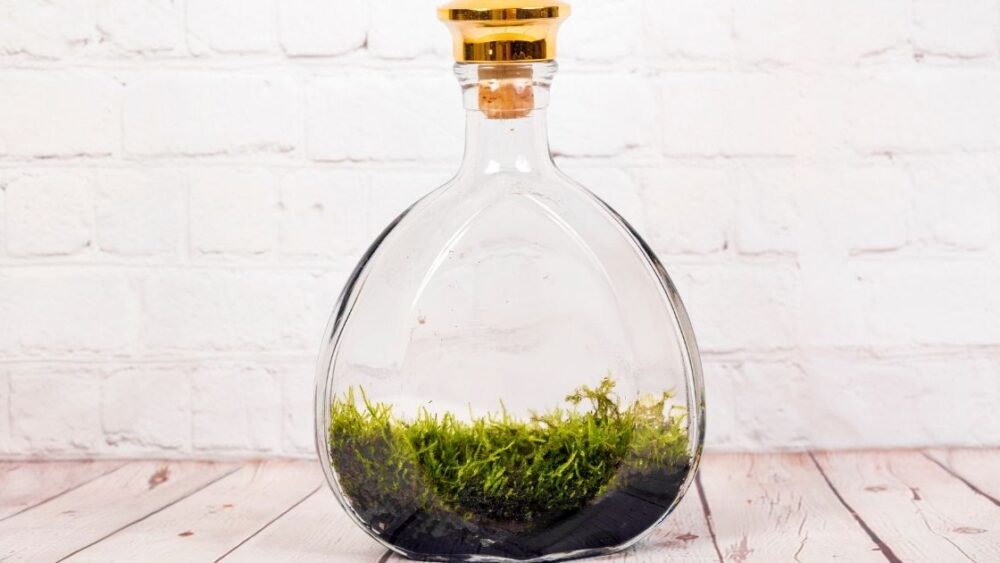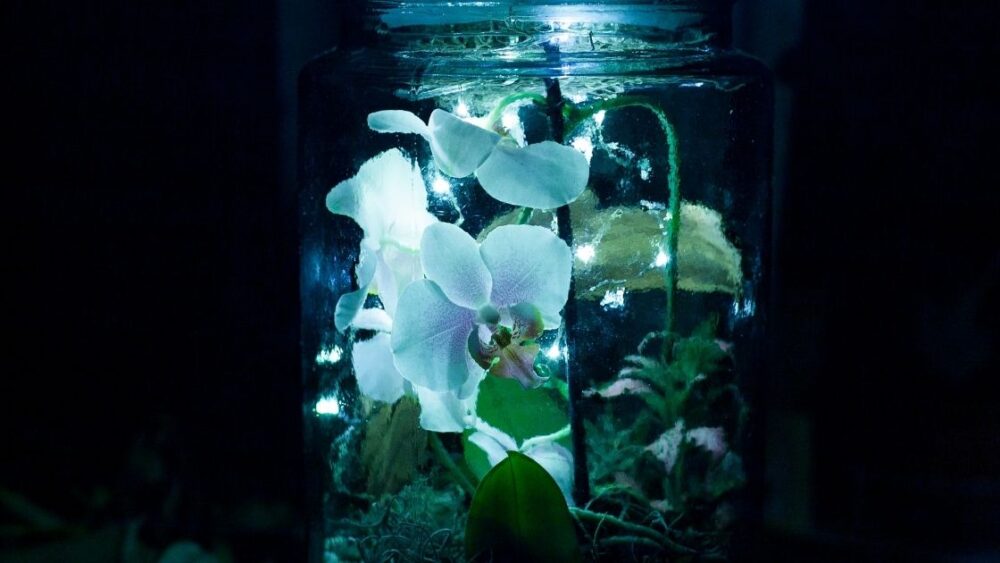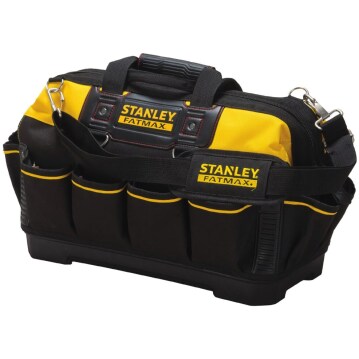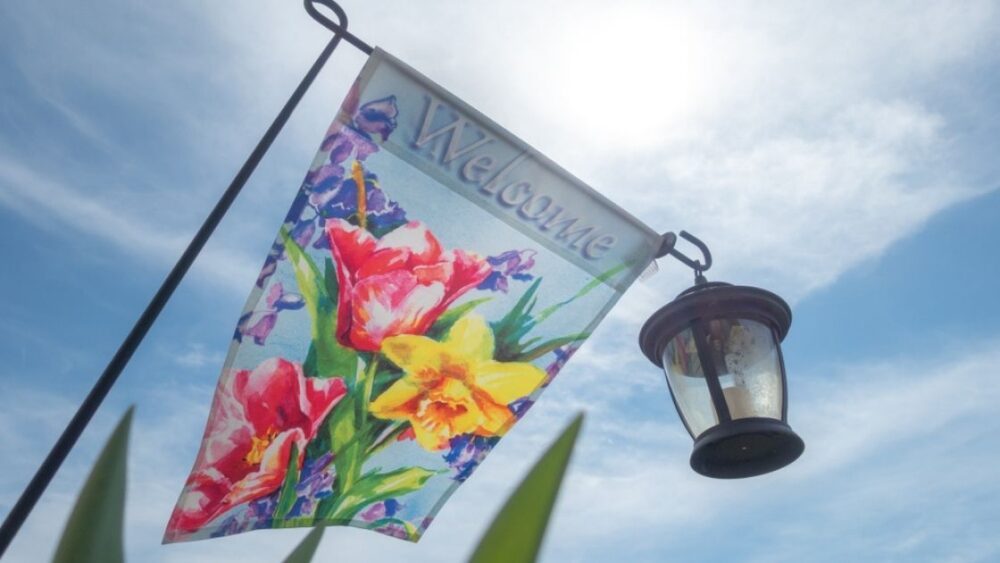
Closed terrariums are miniature, self-sustaining ecosystems that only need sunlight to support the growth of plants. This makes them very different from open terrariums, which require two additional external factors – air flow and water. The air flow continuously brings in carbon dioxide to be used for photosynthesis, while watering is necessary to re-supply the humidity lost through evaporation. In closed terrariums, the carbon dioxide is instead generated by soil bacteria or other tiny microorganisms and the water is continuously recycled back through condensation and re-absorption.
Factors to Consider in Choosing Plants for a Closed Terrarium
Although the self-sustaining aspect of closed terrariums makes them fascinating and low-maintenance, it also narrows down the plant species which can thrive in them. This is because of three main factors:
- The humidity levels inside a closed terrarium are close to 100%, which can make some plants vulnerable to various fungal and bacterial infections. Some plants also rely on the evaporation of water from their leaves in order to pump nutrients. In 100% humidity, this evaporation doesn’t occur.
- Closed terrariums are tiny, non-ventilated greenhouses. They cannot be given much direct sunlight without reaching very high temperatures, able to kill even the most heat-loving plants.
- Fast-growing plants may develop strange, elongated or yellow growth when put into the low-CO2 and low-light conditions of a closed terrarium.
Which Plants Do Well in a Closed Terrarium?

Although a closed terrarium will always have close to a 100% humidity, it isn’t necessarily suitable only for very moisture-loving plants. In fact, there is a surprisingly large overlap between the plant species commonly used for open terrariums and those used for closed ones.
Browse our Affiliate Products
African violets and polka dot plants for example do well in both, despite being somewhat drought-loving in their natural habitat. That’s partly because they are slow-growing plants with thick, water-repellent leaf coatings, which make them resistant to fungal pathogens.
- Baby’s tears
(Soleirolia soleirolii) – extremely common in closed terrariums. Often used as a moss ‘replacement’. The conditions inside a closed terrarium almost perfectly mimic the optimum growing conditions of this tiny-leaved plant.
- All species of moss
With their resilience and slow growth, mosses work very well for closed terrariums. Dicranum species are most common, but any type of forest moss will work well. Mosses serve another important function in a closed terrarium – when brought in from the wild, they contain all sorts of tiny larvae and bacteria, which are important for achieving good carbon dioxide levels inside the enclosed space.
- Ferns
Most species of ferns thrive in humidity above 70%, making them perfect for closed terrariums. Nephrolepsis is the most common species, as it is suitable even for tiny terrariums. Asplenium, Microsorum and Selaginella are a few other good options.
For more information on ferns, check out this article. Why Are Ferns Unique?
- Pilea
Species in this genus are known for loving high humidity environments. P. involucrata and P. peperomioides (money plant) are most commonly used in terrariums.
If your wondering why your Pilea plants are not doing so well, click here. What Causes Pilea Peperomioides (Money Plant) to Wilt or Droop?
- Bromeliads
Billbergia, Neoregelia, Aechmea and most of the other 300+ cultivated species of Bromeliads are all suitable for closed terrariums. Bromeliads are among the most moisture-loving plants in nature – they even have mechanisms to deliberately keep rainwater on their leaves – something which can quickly lead to bacterial and fungal infestations in other plant species.
- Carnivorous plants
Those love humidity and can do well in a closed terrarium, but aren’t suitable for a completely maintenance-free one. Many require winter dormancy, bug feeding and even the tiniest ones (like Drosera spatulata) will tend to put up very tall flower stalks which will have to be removed.
- Orchids

They thrive in high humidity and have leaves that are very resistant to mold issues. This makes them very suitable for both closed and open terrariums.
Which Plants Don’t Do Well In a Closed Terrarium?
Succulents come to mind first – most of them thrive in environments with around 30% humidity and anything above 50% tends to lead to fungal infestations. However, there are many non-succulent plants which aren’t suitable for closed terrariums as well. Humidity tolerance is a big determining factor, but it isn’t the only one. Here are a few others:
- Fast-growing
These plants will have some trouble adapting to the conditions inside a closed terrarium. They tend to have a growth ‘inertia’ and will keep growing in the terrarium until they run out of sugar reserves.
This phenomenon will lead to unattractive, elongated and yellow growth, which will develop in less than 72h of planting them inside your terrarium. Most annual and outdoor garden plants tend to fall into this category. Faster growing plants also tend to shed their lower leaves, which can start rotting inside your terrarium.
- Vertically-growing plants with a single stem
Are not suitable for small terrariums. Choose rosette-forming plants like bromeliads instead.
- Sun-loving plants
They can’t be given sufficient light in a closed terrarium without overheating it. It may seem like this won’t be a problem in colder climates, but this is not always true. At night, as the terrarium cools down, a lot of condensation will develop, leading to mold problems.
The few species of plants that can deal with very high temperatures (succulents) won’t be able to tolerate it in combination with extreme humidity. Artificial LED lighting is the only easy way to grow sun-loving plants inside a closed terrarium.
LED lights have a very low infrared (the heating part of the spectrum that also can’t be used by plants for photosynthesis) output, while sunlight consists of more than 50% infrared wavelengths.
- Plants with large leaves
Maranthas are more suitable for open terrariums. They have high capacity to capture carbon dioxide and are faster-growing. Those plants will also tend to cast too much shade on certain parts of the terrarium, limiting light levels too much to certain parts of the moss canopy. This will lead to yellow spots. Leafy plants with relatively small leaves, like Pilea and Hypoestes are still suitable.
If your wondering about open terrarium plants, also check out this article. Open Terrarium Plants (Which Plants Thrive and Which don’t)
Does Terrarium Size Matter When Choosing Suitable Plant Species?

The larger a terrarium is, the less picky you have to be when it comes to the plant species. Very large closed terrariums will not overheat, there will be less condensation issues and the CO2 levels will be more stable.
Large terrariums can be viewed as greenhouses and can accommodate almost any tropical plant. Aquarium-sized terrariums usually rely on artificial lighting and are often used to grow rare, finicky plant species like orchids and carnivorous plants. It’s not common for very large terrariums to be completely sealed.
Final Thoughts
Closed terrariums will always have close to 100% air humidity. This doesn’t allow for any evaporation of water off of leaf surfaces, which is what many plant species are used to. Although certain non-tropical species, like the African violet can adapt to 100% humidity conditions, most houseplants will not do great in that environment.
Looking at the leaf surface of a plant can give you a rough idea of how suitable it is for a closed terrarium. Non-succulent plants with shiny, water-repellent leaves will usually work well. The natural habitat of the plant is another factor to consider – almost all forest plants are suitable for closed terrariums.
You can experiment with planting non-suitable plant species in your terrarium, but expect it to be more high-maintenance. Overgrowth, pollen-spreading flowers and yellowing leaves are some of the common issues you may run into with unsuitable species. Keep an eye out for any dead plant leaves that start decaying – those can quickly create a moldy mess inside your terrarium.




![Jewel Orchid [Macodes sanderiana] Plants Live in Self-Sustaining Glass Jar, Ecosystem, 100% Maintenance Free, Healthy Plants Guarantee](https://i.etsystatic.com/11006149/r/il/8d5df4/2811910914/il_fullxfull.2811910914_9jm0.jpg)








